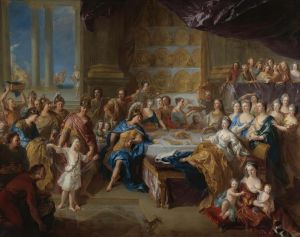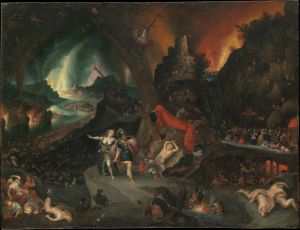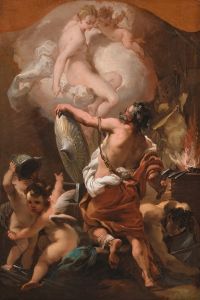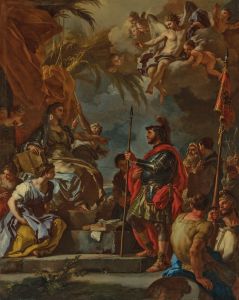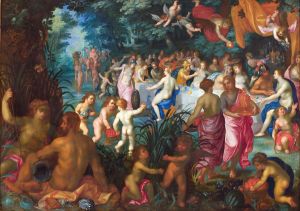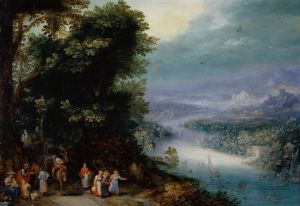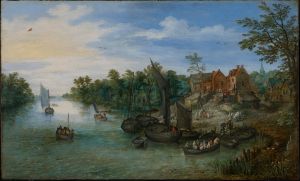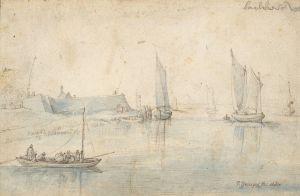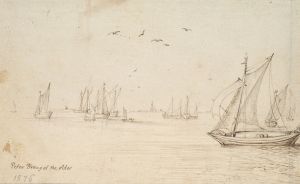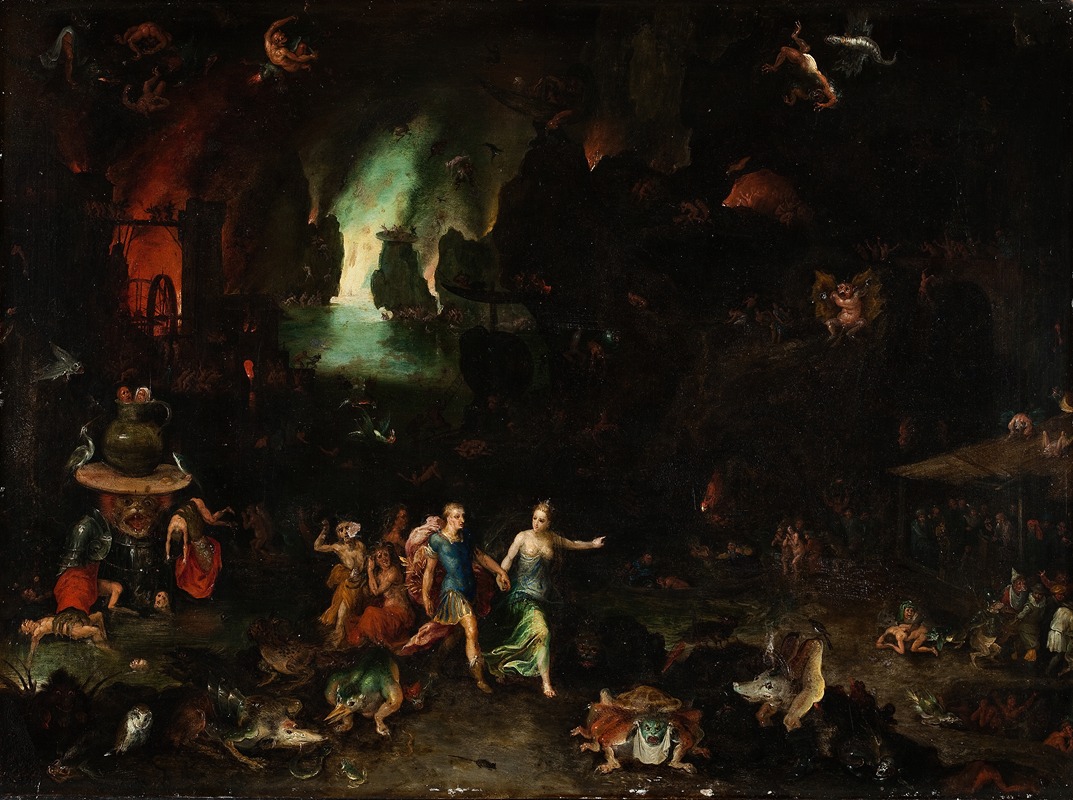
Aeneas And The Cumaean Sibyl In The Underworld
A hand-painted replica of Jan Brueghel The Elder’s masterpiece Aeneas And The Cumaean Sibyl In The Underworld, meticulously crafted by professional artists to capture the true essence of the original. Each piece is created with museum-quality canvas and rare mineral pigments, carefully painted by experienced artists with delicate brushstrokes and rich, layered colors to perfectly recreate the texture of the original artwork. Unlike machine-printed reproductions, this hand-painted version brings the painting to life, infused with the artist’s emotions and skill in every stroke. Whether for personal collection or home decoration, it instantly elevates the artistic atmosphere of any space.
Jan Brueghel the Elder's painting Aeneas and the Cumaean Sibyl in the Underworld is a work that reflects the artist's fascination with mythological and literary themes, as well as his mastery in creating detailed and imaginative landscapes. Painted in the early 17th century, this artwork is inspired by Virgil's Aeneid, specifically Book VI, where the hero Aeneas ventures into the underworld guided by the Cumaean Sibyl, a prophetic priestess.
The painting depicts a vivid and intricate interpretation of the underworld as described in Virgil's epic poem. Brueghel's composition is rich in detail, showcasing his characteristic style of densely populated scenes filled with figures, animals, and fantastical elements. The underworld is portrayed as a dark, chaotic, and otherworldly realm, with a variety of mythological creatures and tormented souls scattered throughout the scene. The artist's use of color and light creates a dramatic contrast, emphasizing the eerie and foreboding atmosphere of the setting.
Aeneas and the Sibyl are typically shown as small, central figures within the vast and complex landscape, emphasizing their vulnerability and the overwhelming nature of their surroundings. The painting captures key elements of the underworld as described in the Aeneid, including the River Styx, Charon the ferryman, and various punishments inflicted upon the damned. Brueghel's attention to detail and his ability to convey narrative through visual elements make this work a compelling interpretation of Virgil's text.
Jan Brueghel the Elder, a prominent Flemish painter, was known for his landscapes, allegorical works, and collaborations with other artists, including Peter Paul Rubens. His ability to combine meticulous detail with imaginative compositions earned him the nickname "Velvet Brueghel." This painting is an excellent example of his skill in blending literary inspiration with his artistic vision.
The exact date of creation for Aeneas and the Cumaean Sibyl in the Underworld is not definitively documented, but it is generally attributed to the early 1600s, during Brueghel's mature period. The painting is currently housed in the Kunsthistorisches Museum in Vienna, Austria, where it remains an important example of Flemish Baroque art and its engagement with classical literature.
This work is significant not only for its artistic merit but also for its role in visualizing and interpreting classical texts for early modern audiences. Through his meticulous craftsmanship and imaginative approach, Jan Brueghel the Elder brought Virgil's underworld to life, offering viewers a glimpse into the epic journey of Aeneas as envisioned by one of the great masters of Flemish painting.





